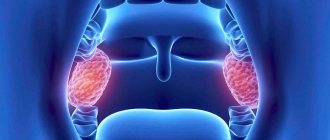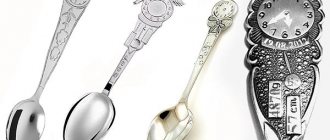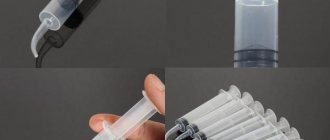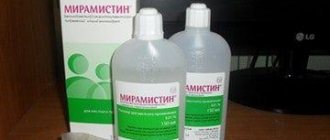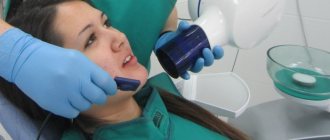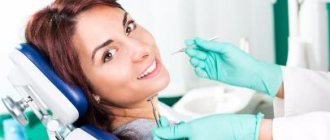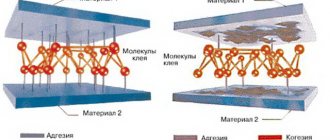But still, proper oral care is 70% of the device’s effectiveness. To keep this 70% intact, you need to follow simple rules regularly. First, be sure to completely remove your dentures before brushing your teeth.
Important! Remove the prosthesis, not the aba, because despite the screw structure, an ordinary person can damage the system when removing it; only a professional can do this. Secondly, use a soft brush and a gentle, non-sanding paste. Thirdly, thoroughly clean the denture itself, and it is advisable to use superfloss and an irrigator. And, of course, monitor the condition of artificial roots regularly! If you follow these simple rules, such a prosthesis will serve you for many years.
Multi-unit abutment
Key component of the All-on-4® treatment concept
Accuracy and ease of use from the developer
In 2000, Nobel Biocare developed the original Multi-unit abutment - at that time the first abutment of its type on the market. Since that time, it has become a recognized industry standard, and many manufacturers have attempted to copy its innovative design. The Multi-unit abutment differs from its analogues in those nuances that determine the success of prosthetics.
The Multi-unit abutment is designed for both full and partial restorations, and in particular for use in combination with the scientifically based and clinically proven All-on-4 ® treatment concept. 1-29
Carefully thought out design
- The short taper is ideal for limited interocclusal distances.
- The wide base of the abutment simplifies the installation of the prosthetic structure.
- For any gum type: straight and angled (17° and 30°) Multi-unit abutments have nine neck heights.
Simplicity and safety of operation
Each Multi-unit abutment comes with a pre-installed holder, making placement much easier. It also serves as a guide when checking the abutment angle.
Precision precision and aesthetics
Exceptionally accurate fit of fixed and semi-removable NobelProcera structures. A wide range of precision milled CAD/CAM designs, each carefully tested for compatibility and accurate fit with the Multi-unit abutment.
Multi-unit Plus Abutment
The Multi-unit Plus abutment for tapered implants takes the All-on-4 ® protocol to the next level. The Multi-unit Plus abutment is designed to significantly simplify and speed up temporary restorations.
Simplification of the temporary prosthetic protocol
The Temporary Snap Coping easily snaps onto the Multi-unit Plus Abutment and does not require the use of screws to secure the temporary restoration during try-in and preparation.
Save time in the clinic and laboratory
The new snap-on feature will help significantly reduce the time it takes to reline an existing prosthesis or create a new temporary structure.
Authenticity matters
A system is only as strong as its weakest link. The effectiveness of each individual component depends not only on its quality and design, but also on its interaction with the rest of the orthopedic system.
That's why we carry out tests and research both on the individual components and their interactions, and on the entire system they form.
Feedback from clinicians
Dr Rob Wain, UK
“I have been using Multi-unit abutments from Nobel Biocare for over ten years. I regularly use them both for All-on-4 ® treatment and for various clinical cases where it is necessary to compensate for the angle of the implant before installing a screw-retained prosthesis.
It is much more comfortable for both me and the patient to work at the soft tissue level, which allows me to perform prosthetics with a greater degree of confidence and safety. The long-term stability and success rates of the structures are excellent, and the easy access makes hygiene and care of the structure easier for the patient.”
Dr. Peter Wöhrle, USA
“The snap-on feature of the Multi-unit Plus abutment makes the integration of temporary copings into the temporary restoration much quicker and easier. This is important because treatment times are reduced, and even dentists with little experience can use this protocol with predictable results.”
Clinical cases
Dr. Paulo Maló, Portugal - All-on-4® Treatment Concept with NobelGuide
Clinical case:
female patient, 50 years old, completely edentulous, removable dentures on the upper and lower jaws installed more than 15 years ago.
Solution:
segmental rehabilitation of the upper jaw using fixed implant-supported structures and the All-on-4 ® treatment concept. The NobelGuide protocol (flapless technique) was used in the upper jaw, and the traditional All-on-4 ® flap technique was used in the lower jaw. High-precision NobelProcera implant-supported bridges were chosen as permanent structures in both the upper and lower jaws.
Dr. Rubén Davó, Spain – Complete rehabilitation for severe atrophy of the upper and lower jaw
Clinical case:
female patient, 60 years old, with severe bone resorption of the upper and lower jaw under a complete removable denture.
Solution:
For rehabilitation of the upper jaw, Brånemark System Zygoma and NobelReplace Tapered implants were used. The All-on-4 ® treatment concept was applied to the lower jaw. NobelProcera high-precision implant-supported bridges were chosen as the permanent structure in both the upper and lower jaws.
Literature
Multi-unit Abutment – Nobel Biocare
1. Malo P, de Araujo Nobre M, Lopes A. The use of computer-guided flapless implant surgery and four implants placed in immediate function to support a fixed denture: preliminary results after a mean follow-up period of thirteen months. J Prosthet Dent 2007;97(6 Suppl):26-34
2. Aparicio C, Perales, P, Rangert, B Tilted implants as an alternative to maxillary sinus grafting: a clinical, radiologic, and periotest study. Clin Implant Dent Related Res 2001; 3:39–49.
3. Abi Nader S, Eimar H, Momani, M. Plaque Accumulation Beneath Maxillary All-on-4 Implant-Supported Prostheses. Clin Implant Dent Relat Res 2014; epub ahead.
4. Agliardi E, Panigatti S, Clericò M, Villa C, Malò P. Immediate rehabilitation of the edentulous jaws with full fixed prostheses supported by four implants: interim results of a single cohort prospective study. Clin Oral Implants Res 2010; 21:459-655.
5. Antoun H, Belmon P, Cherfane P, Sitbon JM. Immediate loading of four or six implants in completely edentulous patients. Int J Periodontics Restorative Dent. 2012; 32(1):1-9.
6. Babbush C, Kutsko G, Brokloff J. The all-on-four immediate function treatment concept with NobelActive implants: a retrospective study. J Oral Implantol 2011;37:431-457.
7. Babbush C, Brokloff, J. A Single-Center Retrospective Analysis of 1001 Consecutively Placed NobelActive Implants. J Implant Dent 2012; 21(1): 28-35.
8. Baggi L, Pastore S, Di Girolamo M, Vairo G. Implant-bone load transfer mechanisms in complete-arch prostheses supported by four implants: A three-dimensional finite element approach, J Prosthet Dent 2013;109(1):9 -21
9. Butura CC, Galindo DF. Combined immediate loading of zygomatic and mandibular implants: a preliminary 2-year report of 19 patients. Int J Oral Maxillofac Implants 2014; 29(1): 22-29.
10. Butura CC, Galindo DF, Jensen OT. Mandibular all-on-four therapy using angled implants: a three-year clinical study of 857 implants in 219 jaws. Oral Maxillofac Surg Clin North Am 2011; 23(2): 289-300.
11. Cavalli N, Barbaro B, Spasari D. Tilted implants for full-arch rehabilitations in completely edentulous maxilla: a retrospective study. Int J Dent; ePub ahead 2012.
12. Francetti L, Agliardi E, Testori T. Immediate rehabilitation of the mandible with fixed full prosthesis supported by axial and tilted implants: interim results of a single cohort prospective study. Clin Implant Dent Relat Res 2008;10(4):255-263.
13. Francetti L, Romeo D, Corbella S, Taschieri S, Del Fabbro, M. Bone Level Changes Around Axial and Tilted Implants in Full-Arch Fixed Immediate Restorations. Interim Results of a Prospective Study. Clin Implant Dent Relat Res 2012; 14( 5):646-654.
14.Galindo DF, Butura CC. Immediately loaded mandibular fixed implant prostheses using the all-on-four protocol: a report of 183 consecutively treated patients with 1 year of function in definitive prostheses. Int J Oral Maxillofac Implants 2012; 27(3):628-633.
15. Gunaseelan R, Saravanakumar M, Hariharan R. Restoration of failing maxillary implant supported fixed prosthesis with cross arch splinted unilateral zygomatic implant: A Clinical Report. J Oral Implantol 2012;38(6):751-755.
16. Landazuri-Del Barrio RA, Cosyn J, De Paula WN, De Bruyn H, Marcantonio Jr E. A prospective study on implants installed with flapless-guided surgery using the all-on-four concept in the mandible. Clin Oral Implants Res 2013;24(4) 428-433.
17. Lopes A, Maló P, de Araújo Nobre M, Sanchez-Fernández E. The NobelGuide® All-on-4® Treatment Concept for Rehabilitation of Edentulous Jaws: A Prospective Report on Medium- and Long-Term Outcomes. Clin Implant Dent Relat Res 2014; 10.1111/cid.12260. .
18. Malo P, de Araujo Nobre M. A new approach for maxilla reconstruction. Eur J Oral Implantol 2009; 2(2):101-114.
19. Malo P, de Araujo Nobre M, Lopes A, Francischone C, Rigolizzo M. “All-on-4” Immediate-Function Concept for Completely Edentulous Maxillae: A Clinical Report on the Medium (3 Years) and Long-Term ( 5 Years) Outcomes. Clin Implant Dent Relat Res 2012;14 Suppl 1:139-150.
20. Malo P, de Araujo Nobre M, Lopes A, Moss SM, Molina GJ. A longitudinal study of the survival of All-on-4 implants in the mandible with up to 10 years of follow-up. J Am Dent Assoc 2011;142(3):310-320.
21. Malo P, de Sousa ST, De Araujo Nobre M. Individual Lithium Disilicate Crowns in a Full-Arch, Implant-Supported Rehabilitation: A Clinical Report. J Prosthodont 2014; ePub ahead.
22. Malo P, Nobre M, Lopes A, Francischone C, Rigolizzo, M. Three-year outcome of a retrospective cohort study on the rehabilitation of completely edentulous atrophic maxillae with immediately loaded extra-maxillary zygomatic implants. Eur J Oral Implantol 2012;5(1):37-46.
23. Malo P, Nobre M, Lopes A. Immediate Rehabilitation of Completely Edentulous Arches with a Four-Implant Prosthesis Concept in Difficult Conditions: An Open Cohort Study with a Mean Follow-up of 2 Years. Int J Oral Maxillofac Implants 2012;27(5):1177-1190.
24. Malo P, Rangert B, Nobre M. All-on-4 immediate-function concept with Branemark System implants for completely edentulous maxillae: a 1-year retrospective clinical study, Clin Implant Dent Relat Res 2005;7(Suppl 1): S88-S94, 2003-161
25. Mozzati M, Arata V, Gallesio G, Mussano F, Carossa S. Immediate Postextractive Dental Implant Placement with Immediate Loading on Four Implants for Mandibular-Full-Arch Rehabilitation: A Retrospective Analysis. Clin Implant Dent Relat Res 2013;15:332-40.
26. Puig CP. A retrospective study of edentulous patients rehabilitated according to the 'all-on-four' or the 'all-on-six' immediate function concept using flapless computer-guided implant surgery. Eur J Oral Implantol 2010;3(2):155-163.
27. Schroering R, Parrish K. Clinical protocol for rapid, graftless, four-implant restoration of the fully edentulous patient. Practical Procedures and Aesthetic Dentistry 2008; 29: supported by Nobel Biocare
28. Van Lierde, KM Browaeys H, Corthals P. Impact of fixed implant prosthetics using the 'all-on-four' treatment concept on speech intelligence, articulation and oromyofunctional behavior. Int J Oral Maxillofac Surg 2012; 41(12):1550–1557.
29. Weinstein R, Agliardi E, Fabbro MD, Romeo D, Francetti L. Immediate rehabilitation of the extremely atrophic mandible with fixed full-prosthesis supported by four implants. Clin Implant Dent Relat Res 2012;14:434-41.
Indications and restrictions
The use of fixators during implantation is recommended in the presence of the following factors:
- Installation of a single prosthesis on a screw support;
- Restoration of extensive extended defects in the dentition;
- Complete restoration of the upper or lower jaw;
- The need to install conditionally removable dentures “All on 4” or “All on 6”.
For angular models, an inclined position of the pins is provided, determined based on the characteristics of the anatomical structure of the jaw. Abutments guarantee a tight fit of the crown sufficient to restore functional and aesthetic parameters.
Among the limitations associated with the use of the model in question for prosthetics, it is worth highlighting the impossibility of fixing products when covering an angular discrepancy, the value of which is higher than 100 degrees.
Installation protocol
Placement of abutments on implants is carried out after the soft tissue has healed, as a result of which the gum contour is naturally formed. The waiting period is 3-4 months, with the exception of operations performed in accordance with the one-time protocol.
The installation algorithm requires following the following sequence of actions:
- Using a holder, the abutment is placed on an artificial pin;
- The connection to the base is made by screwing in a screw;
- To remove the holder, reverse rotation is performed;
- The final fixation is carried out using a combination of a screwdriver and a wrench.
To achieve the desired result, it is necessary to control the markings of the tools, using suitable screwdrivers for each stage. An artificial crown (or a complex prosthesis) is fixed on the abutment in one and a half to two weeks - the procedure takes no more than half an hour and does not cause discomfort in patients.
Advantages of MultiUnit
Among the positive aspects characteristic of the models in the line under consideration are:
- A well-developed structure that ensures the stability of the structure;
- Simplicity and safety of installation on an artificial base;
- Accuracy of system connection, including after dismantling;
- Minimum likelihood of the adhesive composition getting into mucous tissues;
- Possibility to select the angle of inclination of the structure to compensate for the position of the prosthesis;
- Height adjustment taking into account the anatomical structure of the mucosa.
Among the disadvantages noted by dentists is the need to comply with the protocol for placing retainers on the occlusal surface, as well as problems associated with the correction of occlusion of the jaw rows.
Dental implantation on multi-units
Implantation on Multi-units is a relatively new implant technology that facilitates and improves the installation of an orthopedic structure on titanium roots. Multi-unit is a multi-component abutment onto which the prosthetic system is fixed with a screw fastening. In contrast to the cement method of attachment, the prosthesis on Multi-units can be easily removed if correction or replacement is needed. Multi Unit prosthetics provide reliable, stable fixation. The depreciation of the prosthesis under chewing load and the risk of penetration of cement under the gums are eliminated.
What is a multiunit
Multiunit is a modern multi-component abutment that allows you to attach orthopedic structures using a screw method. The peculiarity of this technique is that it can be unfastened at any time for balancing, replacement of an element, part of the prosthesis, or another service. Therefore, such prosthetics are sometimes called conditionally removable.
The screw fastening is very reliable, much stronger than cement fixation. There are no gaps between the prosthesis and the gum, it fits quite tightly, which eliminates the development of pathogenic flora and bacteria.
Multi-Unit abutments are available in straight (for the front teeth) and angular (inserted into the bone at an angle of 17-90 degrees to compensate for the difference between the angle of the titanium rod and the crown).
What is Multi Unit
The ROOTT Multi-Unit implant and the Multi-Unit abutment are two different designs.
- Implant Multi-Unit ROOTT
One-piece monoblock implant with a flexible abutment (the root body and adapter form a single system). Such implants are used in one-stage protocols with immediate loading, when restoring a long-term dental defect - in the absence of 3 or more adjacent teeth. The orthopedic system is fixed 2-3 days after implantation of titanium roots. Thanks to the flexible adapter, the doctor adjusts the position of the prosthesis taking into account the characteristics of the patient’s bite and occlusion.
Multi-Unit Abutment
A separate element that is installed on a classic two-component implant after its complete osseointegration. It is used for both single and multiple restorations. Suitable for fixing a single crown or bridge.
Prosthetics with fixation on Multi-unit
Multi-unit adapters are used when installing implants with screw fastening. Indications for use:
- installation of a bridge when the implants are not parallel;
- conditionally removable prosthetics with complete edentia;
- deficit of interdental distance;
- the need for easy removal of the structure.
MultiUnit is relevant for complex cases of implantation in the absence of teeth in the jaw. They are used for prosthetics on bars and on 4 or 6 implants.
On beams with complete edentia
Indications for the use of beam structures for prosthetics:
- Complete or partial edentia (absence of adjacent teeth in a row).
- Impossibility of installing a large number of implants.
The bar is fixed on 4 or 6 implants to reconstruct the integrity of the entire dentition. Connects titanium roots to each other, which gives the prosthesis additional stability.
4 implants are implanted on the frontal area of the jaw, onto which a fixation beam is installed. Inside the structure there is an additional fastening in the form of half a pipe, which fits onto a round beam. The snapping of the lock ensures a strong connection of the prosthesis in the oral cavity .
On 4 implants according to the All-on-4 protocol
In the case of an absolute absence of teeth, the introduction of a large number of titanium roots may not be feasible due to bone deficiency, the adjacent location of the maxillary sinus or the mandibular nerve. All-on-4 technology allows you to solve a difficult situation. Four implants are installed on the problematic jaw, which will support the entire dentition.
Two implants are implanted vertically in the frontal area. In the side zone, two other roots are installed at an angle of 45⁰. The connection is made by the Multi-unit element. This allows you to create a reliable, permanent structure with little effort. Prosthetics on 4 implants does not require bone grafting or changes in the position of the mandibular nerve. All-on-4 implantation on multi-units reduces the volume of surgery and is more economical .
- Complete restoration of the dentition in just 4 days!
more detailsRoott Pterygoid Implants Sinus lift is no longer needed!
more details
Once and for life! Express implantation in 4 days with a permanent ReSmile prosthesis
more details
All-on-4, All-on-6, ReSmile, Zygomatic implantation We use all modern methods of dentition restoration
more details
Multi-unit implant system ROOTT
The ROOTT universal implantation system presents a line of one-component multi-unit implants for screw fastening of prosthetic structures.
- COMPRESSIVE M. Single-piece implant with multi-unit, standard diameter. Used for screw fixation of full and partial prosthetic structures.
- COMPRESSIVE MP . A one-piece multi-unit implant for installation in the pterygoid region, avoiding the sinus lift procedure.
- COMPRESSIVE MS . Long, narrow monoblock implant with multi-unit for installation in a narrow alveolar ridge. Used for multiple restorations in the anterior region.
All models of the COMPRESSIVE line with multi-units are characterized by:
- High initial and subsequent stability;
- reliable screw fixation;
- taking impressions at gum level;
- adjustable abutment angle;
- ability to be combined with other multi-unit implants.
Indications
Factors considered to justify the use of Multi Unit abutments include the following clinical situations:
- Planning for local implant installation;
- Preparation for prosthetics of an extended area or the entire jaw row;
- Availability of medical indications for wearing removable dentures.
The final decision on choosing an abutment model is made based on the results of a clinical examination conducted using the hardware method.
Installation steps
Multiunit retainers are installed after the gum formers are removed. The algorithm provides a number of sequential manipulations:
- Selecting a design with a platform corresponding to the prosthesis;
- Positioning and securing with holder;
- Screw connection of elements;
- Removing the retaining insert;
- Final fixation.
A torque wrench and profile screwdriver are included as standard, eliminating the need to purchase additional equipment.
Taking an impression
To customize transfers to ensure accurate impressions, follow these steps:
- Installation and fastening to the superstructure;
- Applying liquid to obtain an impression using a syringe;
- Placement in the oral cavity of an impression tray, also coated with a special compound;
- Removal of the device after the material has hardened;
- Removing the fixing screws.
The resulting cast is transferred to the laboratory, where it is compared with the basic prototype.
Manufacturers
Many international companies are engaged in the production of straight and angular multi-unit abutments, including leading concerns that have the resources to implement the full production cycle. Among the most popular brands it is worth highlighting:
- Nobel Biocare is a Swiss supplier offering products made from high-quality and expensive materials with full biocompatibility and excellent aesthetic characteristics.
- Ankylos is a German company that has developed a unique Ankylos TissueCare Connection, a feature of which is the transfer of the transition border towards the central part of the root element. The technology reduces mechanical stress, provides improved stabilization, and eliminates suprastructure deformation.
- Alpha-Bio is a subsidiary of Nobel, located in Israel, and created for the research and development of innovative solutions in the field of orthopedic prosthetics.
- Osstem is a South Korean company, a leader in the Asian market, whose presence in the USA and Europe is increasing every year. Osstem Multi Unit abutments are characterized by reliable operation and affordable cost, which makes them a very attractive option for domestic clinics.
The main criterion for choosing an abutment is its compatibility with the implant and crown. Multiunit - universal models, suitable in most cases, and providing the desired treatment result.
Multiunit abutment
A classic abutment is a transitional element that combines an implant with an orthopedic structure (crown, bridge, complete denture) into a single system. The variability of adapters in shape, angle of inclination, material, manufacturer, installation method allows you to choose a superstructure for any type of prosthetics.
Unlike classic adapters, Multi-unit abutments are a multi-component design, consisting of several parts that are assembled into a single system during installation. Multi-unit abutments have different lengths, inclination angles, projection and neck heights. For ease of installation, systems are used on three orthopedic platforms - standard, wide, narrow. The fixation method is exclusively screw, which makes it possible to disassemble the structure in the future and replace a separate component.
The designs differ from classical analogues:
- short cone - solves the problem of limited interocclusal space;
- different neck height options - straight and angular nodes allow you to choose a model to suit the patient’s gums;
- different orthopedic platforms to simplify the installation process;
- pre-installation holder - acts as a guide when determining the desired angle of inclination.
The multi-unit abutment can be straight (with an inclination angle of up to 40°) and angular (with an inclination angle of up to 74° or up to 100 ⁰), to compensate for the angle of divergence between the axis of the artificial root and the orthopedic structure. The angle of inclination of the cone when fixing the adapter with a crown is from 5° to 35°.
Technical parameters and equipment
Key differences between MultiUnit and its analogues that determine the success of prosthetics:
- fixation of elements using a hexagonal-conical method;
- the model range is distinguished by a variety of basic parameters;
- internal hexagon ensures installation accuracy;
- versatility;
- screw fixation;
- the surface is treated using BioActive technology;
- Three platform variations are available: standard, narrow and wide;
- shortened cone is suitable for use in narrow interocclusal spaces;
- Variation in cervical height.
The kit for straight and angled abutment includes:
- screwdrivers;
- titanium cap for CAD/CAM;
- gum former;
- alloy base;
- titanium and alloy screws;
- simulated plastic cap;
- metal healing cap;
- plastic holder;
- Impression copings for closed and open trays.
What is an abutment
An abutment is a transitional element that connects an implant and a dental prosthesis of any type - a dental bridge, a removable denture, a single crown. The threaded lower part is screwed into the implant, and the upper part serves as the basis for the crowns. It is placed only after the implant has successfully implanted in the bone.
Abutment translated from English means “support”. There should be no gaps between the implant and the prosthesis when connecting. Otherwise, there is a high probability of bacteria accumulation - and they can cause tissue inflammation, which will lead to implant rejection.
Individual
Such abutments are developed to special order and adjusted to the individual characteristics of a particular patient. Their creation became possible thanks to the advent of advanced computer technologies. Using CAD/CAM, a sample of the future abutment is modeled, after which the design is created on a robotic machine. As a rule, such abutments are no longer made of metal, but of zirconium, and are used mainly for the restoration of front teeth. This is where aesthetics are most important.
Custom abutment
The price of such a product, of course, will be an order of magnitude higher, but it has practically no disadvantages. Only advantages: excellent fit, the ability to take into account all the nuances, reduced risk of inflammatory processes, adjustment to the gums, ideal aesthetics.
What is an individual abutment, and why is it better than a “generally accepted” one?
Transition elements come in many different forms. It is not always possible to choose the appropriate one from those available from manufacturers, since the patient may have characteristics that do not meet the standards. A personalized solution takes into account the smallest nuances, which improves appearance and functionality. Comparison of different types of adapters - in the table:
| Kinds | Custom abutment | Standard abutment |
| pros |
|
|
| Minuses |
|
|
As you can see, everyone has pros and cons. The doctor decides whether to make an individual abutment or use a standard one, taking into account all the wishes of the patient and the current clinical situation.
Temporary
Such models are made of plastic and are designed to connect an artificial tooth root with a temporary fixed prosthesis at the stage of implant healing. Or for trying on future prostheses, as well as their modeling. They are quite light and do not interfere with the process of fusion of bone tissue with the implant body, while having good aesthetics and fairly high strength.
Temporary abutment
Angled multi-unit abutment
It differs in that it has a certain angle of inclination. Such models are used in cases where implants are placed at an angle. Due to the fact that the abutments are inclined, it is possible to level the position of the prosthesis. In addition, they allow the use of screw fastening, where a screw is screwed into the implant - it is placed through the top of the crowns. This way the prosthesis is securely fixed, but can be removed if necessary.
Angled multi-unit abutment
Titanium
One of the main properties of a titanium abutment is its incredible strength, which virtually eliminates cases of product fracture under any load. Also, the material is completely biocompatible with the human body. However, like the implant itself, titanium is also used for its manufacture. Ideal for dental prosthetics in the chewing area, it is able to withstand and redistribute strong mechanical loads.
Titanium abutment
Abutment replacement and manufacturing companies
An implant-abutment-crown is a structure consisting of several elements that, for a number of reasons, can break or fail. Replacing implants requires invasive surgery, but if you have a broken abutment, installing a new one is easier.
Abutments for implants (as well as additional orthopedic components) are produced by the same manufacturer. That is why, in order to quickly find a replacement, we recommend installing implants from well-known brands that have been around for more than one year. These do not necessarily have to be premium companies: today, economy class manufacturers are widely represented on the market, which, however, maintain an acceptable level of quality. If the doctor offers you products from new and unknown brands, be prepared for the fact that the company may cease to exist at any time, which will make it difficult to replace components.
Among the top companies, the most famous are Nobel Biocare, Straumann, Astra Tech, Ankylos, Xive. Budget brands of implants that you can definitely trust: Alpha Bio, MIS, Dentium, Osstem.
Zirconium dioxide abutment
Zirconium is highly aesthetic, so the use of such abutments would be appropriate for connecting a metal implant and prosthesis in the smile area. The gums look as natural as possible, since they do not come into contact with metal, and therefore are not stained. In addition, white zirconium dioxide abutments are invisible even with ceramic veneering - this is how artificial teeth fully imitate natural teeth.
Zirconium dioxide abutment
Cost of superstructures from popular manufacturers
As a rule, supporting structures are produced by the same companies that manufacture implants. Well-known brands include Nobel Biocare, Straumann, Osstem, Oneway Biomed, Astra Tech, MIS.
The price of the product depends on many factors - material, shape, type, manufacturer's brand - and starts from 2 thousand rubles for a plastic temporary structure. The cost of structures made in the laboratory according to individual orders is 2–4 times higher than factory ones and amounts to 12–18 thousand rubles. The most expensive are individual elements made of zirconium dioxide, the cost of which exceeds 30 thousand rubles.
However, the cost is actually not important for the patient - when voicing the price for implantation, the doctor immediately includes the cost of the abutment and all other elements in the surgical or orthopedic stage. But it is important for the patient himself to clarify which abutment will be installed - the original one from the manufacturer, an individual one or an analogue.
Heal former
It is installed only temporarily; you need to wear it for about two weeks at the final stage of implantation. It helps to form a beautiful, smooth and clear gum contour. They will be used if you are restoring teeth using two-stage implantation with delayed loading of the prosthesis. Once the implant has completely taken root, the gum is opened, and the plug protecting the artificial root is replaced with a former.
Heal former
Installing an abutment on an implant
The one-stage implantation technique involves installing an implant and abutment (most often it is a one-piece structure) in one visit to the doctor. If we consider the classic two-step technique, then the installation of the implant, abutment and crown is carried out in several steps:
- preliminary procedures before implantation (consultation, tests, photographs, etc.);
- surgical stage of implantation with installation of a temporary gum former;
- installation of abutment after implantation.
When installing the abutment directly, two types of fastening are used.
Abutment fixation
Cement fixation is carried out using a special cement-based material. A simple and aesthetic method, the disadvantages of which are difficulties in removing excess cement, as well as removing and replacing the prosthesis.
Screw fixation is the fastening of a prosthesis using a screw mechanism. A hole is made in the crown through which the abutment screw passes, after which the hole is closed with material and ground. This technique is safer from the point of view of inflammation, but the risk of structural failure is greater.
For screw fixation
These are a special type of abutments that are used to secure crowns with screws. They can be either straight or inclined (multi-unit - we talked about them above). In this case, the elements are connected using small screws - they are screwed into the abutment through the top of the crowns. To prevent the “hats” from being visible, the chewing surface is covered with a thin layer of composite.
Abutment for screw fixation
This type of abutment is mainly used in situations where there is a need to remove dentures. For example, when using implantation methods with immediate loading, when dentures are placed immediately after implantation.
Methods of fixation on dental implants
Screw fastening
The crown is attached using a small retaining screw that is threaded through a hole created on the occlusal surface of the denture. The screw passes through the crown, through the abutment (which also has a hole), and is screwed into a special thread located inside the implant. This is how the final fixation of the external and intraosseous components of the denture occurs. And in order to solve the issue of aesthetics and hide the “tops” of the screws from prying eyes, doctors mask the chewing surface of artificial teeth with a composite material.
Straight or angular superstructures are used for this purpose. The advantage of screw fastening is the ability to remove the structure for its restoration. But screws can break, for example, due to poor-quality material or due to the lack of professionalism of the implantologist. The method is used for single restorations and complex solutions for restoring a large number of teeth using immediate loading protocols.
Cement fixation
The prosthesis is fixed using a special cementing solution and it is no longer possible to remove it - here you will only have to saw the structure (the implants, of course, remain in place). The advantage of cementing is improving the aesthetic qualities and increasing the operating comfort of the structure. It is mainly used for single restorations, less often for complex implantation (but mainly for permanent prosthetics, when there is no need to correct the installed orthopedic structure).


